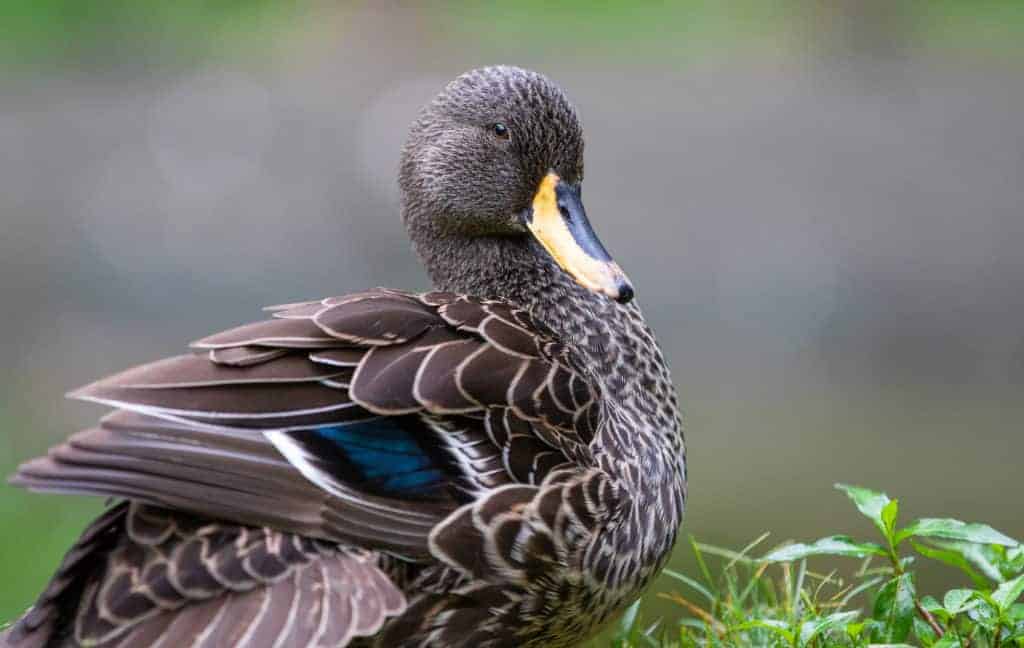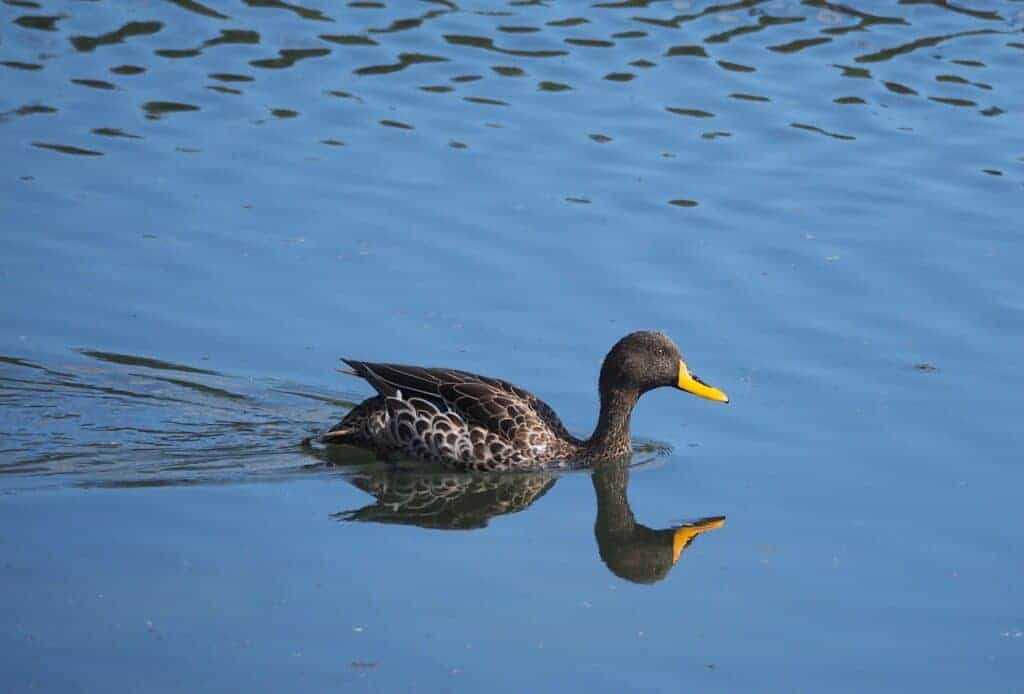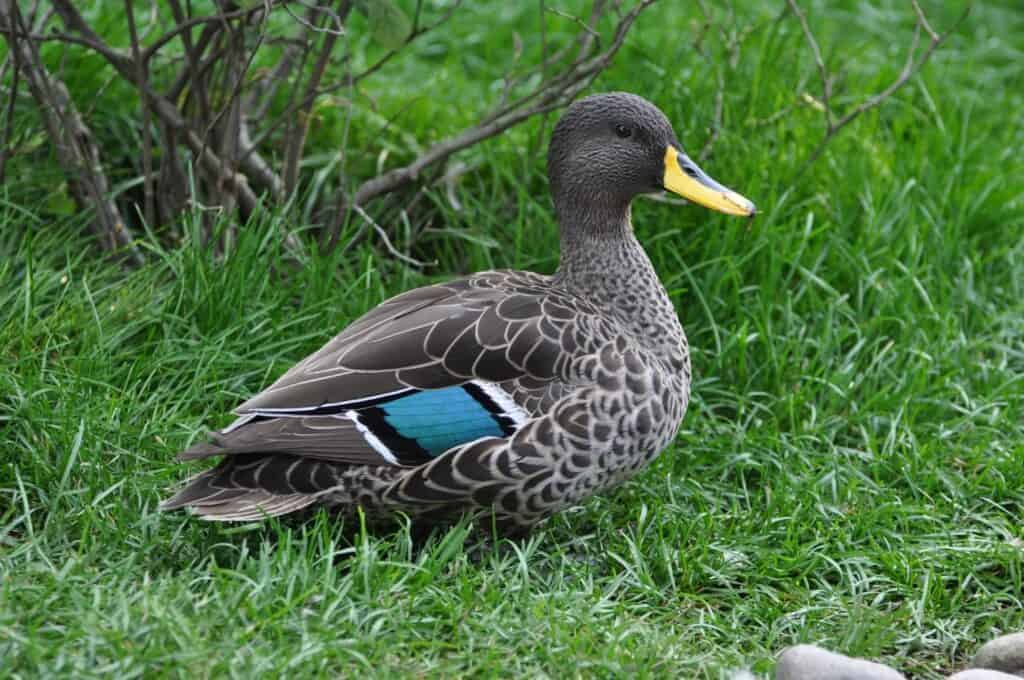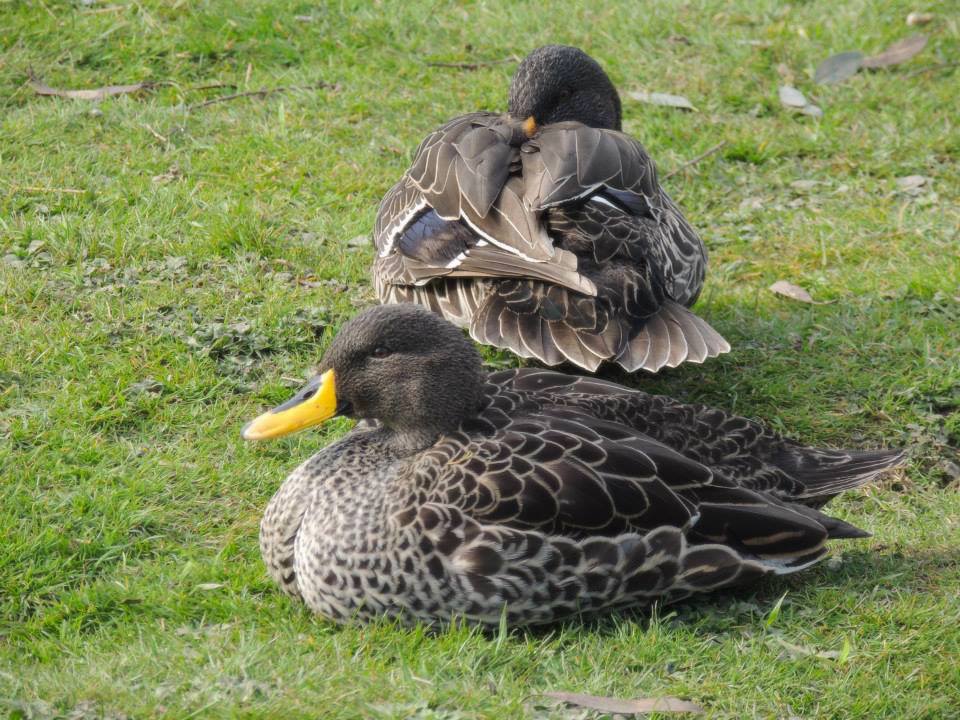Yellow-billed Duck

Two subspecies of Yellow-billed Duck are recognised:
- Abyssinian A. u. ruppelli
- African A. u. undulata

Anas undulata
One of the most numerous and widespread of African ducks, the aptly named Yellow-billed Duck can be found from Ethiopia to the Cape of Good Hope. It fills a similar ecological niche to that of the Mallard, though the latter’s non-breeding range extends into the former’s northernmost range. Yellow-billed Ducks can be wary and difficult to approach where hunted, but become tame and approachable where not persecuted. Flocks of several hundred birds are common in the dry season: breeding takes place during the rains.

The duck and the drake have similar plumage, though the beak of the smaller duck is not as bright as that of the drake. There is no eclipse plumage.

Much the most widespread subspecies is the African A. u. undulata. The northern one, the Abyssinian A. u. rueppelli, has darker, browner plumage and a bill of an even deeper yellow. The latter occurs north of the equator in East Africa.
Yellow-billed Ducks thrive in captivity, though they should be kept apart from their congeners, with which they will readily hybridise. The duck lays a clutch of 4 to 12 eggs and incubates for 26–29 days. The drake takes no part in rearing the young.
Share this page